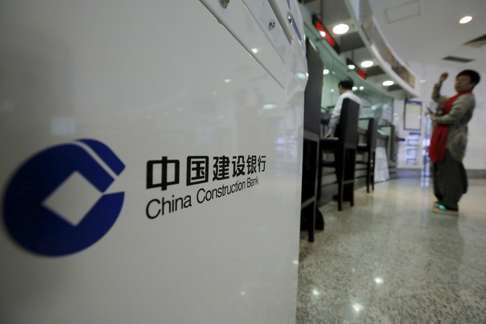‘Big five’ banks tipped as best mainland bets
With fiscal tightening back on the agenda, the largest players will be the most capable of handling rising debt and risk

Analysts are predicting a significant switch in monetary policy on the mainland, from easing to efficiency, which will require a complete reassessment of the performance of banks.
And in this context, investors are being guided to look at larger institutions, rather than smaller ones.
“Defaults may accelerate when the monetary focus shifts to efficiency — but it’s exactly the hard evidence that could support a structural re-rating of China banks,” wrote Nomura analysts Sophie Jiang and Carson Lo in a report.
The extent of the loans issued by Chinese banks, and the country’s banking industry as a whole, to sectors at risk of default still remains unclear.
Official figures from the Chinese Banking Regulatory Commission say that non-performing loans [NPLs] in China’s commercial banking sector rose to 1.81 per cent of total lending at the end of the second quarter, the highest since the global financial crisis in 2009.
Many analysts, however, believe the true NPL ratio to be far higher.
“Based on a variety of data sets, we estimate the underlying NPL ratio of China’s corporate sector could have been around 10-15 per cent by the end of 2015,” said a recent Credit Suisse report on the country’s banking sector.
The fact that many shares are trading at lower levels than one would imagine from the banks’ performance, appears to reinforce the market view, that NPL ratios are far worse than officials claim.
“We find the market is implying sustainable ROE [return on equity] of 9.6 per cent for China banks. ... Compared with ROE in the first quarter of 16.7 per cent, this seems rather harsh and suggests the market is factoring in a lot of concerns over key earnings drivers and potential spikes in credit costs, due to the recognition of ‘hidden’ NPL,” wrote the Credit Suisse analysts.
Nonetheless, not all banks are equally at risk as the non-performing loan problems play out.

“The big five banks occupy the top five positions thanks to [their] conservative lending strategy, and ICBC [Industrial and Commercial Bank of China] and CCB [China Construction Bank] are the better performers,” they concluded.
Jiang and Lo from Nomura identified the same two as the better bets.
“We expect likely, frequent volatilities to come through when defaults accelerate, and would stick with solid names such as ICBC and CCB throughout the expected landscape change in the coming 12 months,” they wrote.
The Nomura analysts predict that one factor driving that landscape change will be a switch away from monetary easing because of a divergence between two of the main measures of China’s money supply.
In June, M1, which includes bank deposits and currency in circulation, rose 24.6 per cent from a year earlier, whereas the broader M2, which also includes savings deposits, increased 11.8 per cent, matching the May reading.
“The record-high M1/M2 gap suggests that the bottleneck in the monetary policy is liquidity efficiency, not supply, and a switch of monetary focus from liquidity easing to efficiency is likely needed to address this bottleneck,” wrote Jiang and Lo.
They also noted that last time the difference between the two reached this level, in January 2010, Chinese policy makers embarked on a programme of monetary tightening.